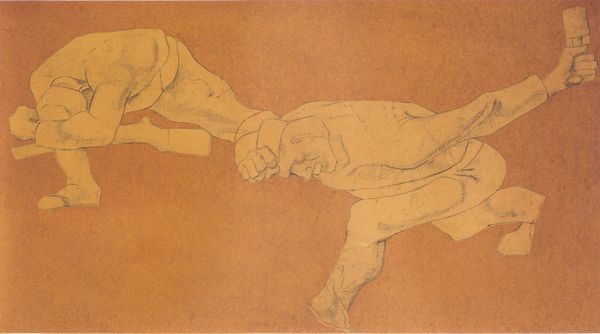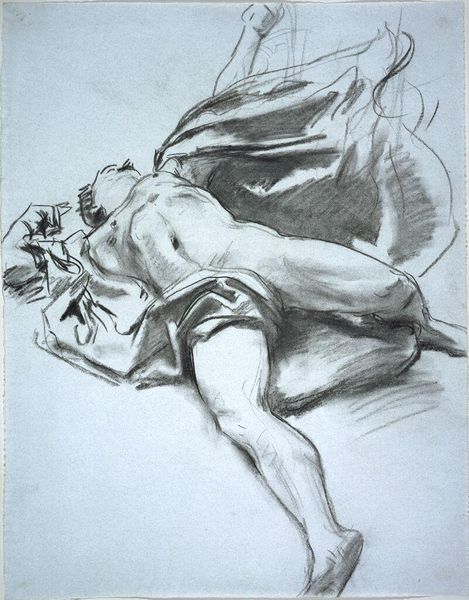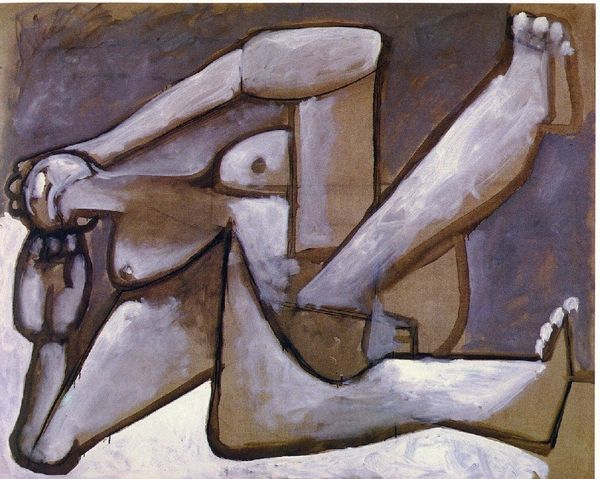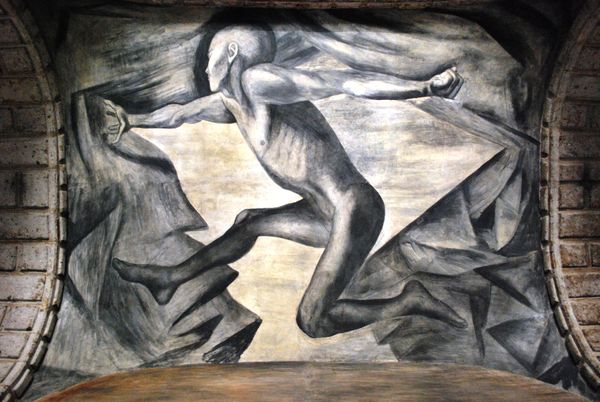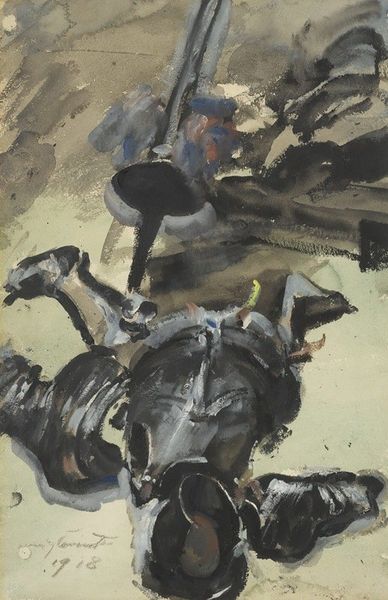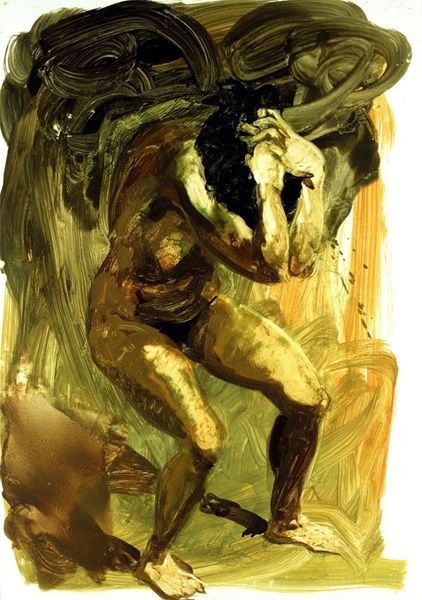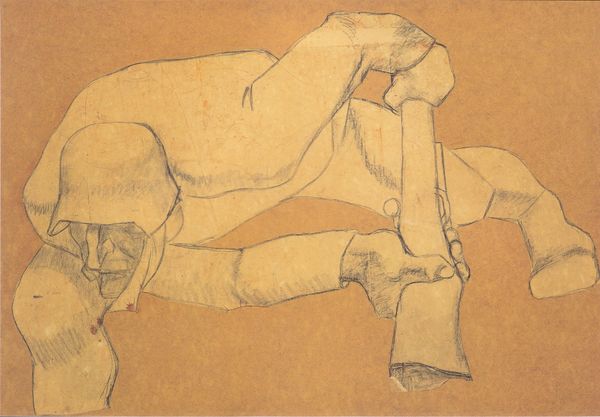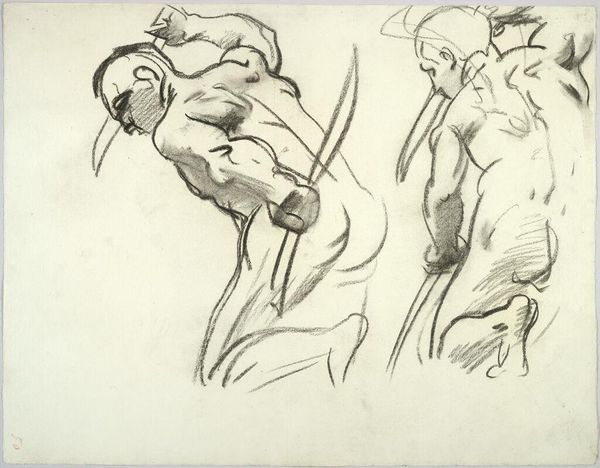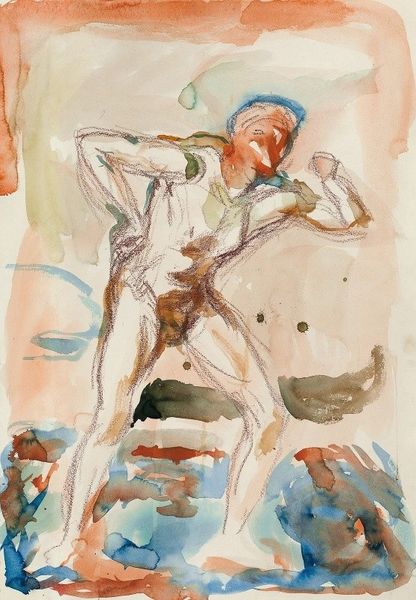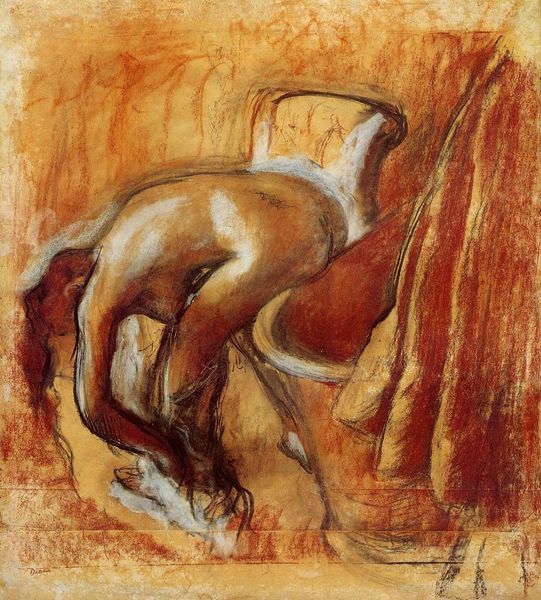
Dimensions: 169 x 84 cm
Copyright: Public domain
Curator: This is "Toter Soldat," or "Dead Soldier," painted by Albin Egger-Lienz in 1918. It's an oil painting that really grabs you, doesn’t it? Editor: It does. My first impression is… oppressive. There’s a claustrophobic feel to it, like the figure is being swallowed by earth. The color palette adds to that – muted browns and grays that evoke decay and despair. Curator: Precisely. Egger-Lienz made this after experiencing the horrors of World War I firsthand. He was initially a supporter of the war, but, like so many others, became deeply disillusioned by the sheer brutality of it. He initially presented it as a tribute to fallen soldiers, but it was eventually rejected due to the artist's rising anti-war stance and what officials thought was a glorification of death and suffering. Editor: So, beyond the personal experience, the piece serves as a searing critique of war’s dehumanization. Look at the rigid posture, the almost stone-like texture of the skin. The figure isn't even afforded a peaceful repose; the upward angle is unnerving, as though we're peering into a mass grave. And the bandages suggest attempts to resuscitate – an intervention that ultimately failed, of course. Curator: Right, and notice how Egger-Lienz uses a flattened perspective. It’s as though the soldier is pressed up against the picture plane, suffocating him. The man’s feet and legs are disproportionately large—a touch that I find unnerving. But then, the almost complete darkness of his face is a visual key to understanding that what's really been assassinated is humanity. Editor: Yes! It emphasizes the loss of individuality in war. This is not a specific person but an Everyman, a symbol of countless lives extinguished. The rough, almost primitive brushstrokes enhance that sense of anonymity and blunt trauma. He truly succeeded in showing the damage, pain, and physical ruin exacted from men in combat. I appreciate how much the historical and emotional landscape blends. It’s quite raw. Curator: Definitely, and something of a shift away from traditional depictions of heroism on the battlefield, don't you think? He’s presenting the antithesis of glory, a testament to the human cost. Even the expressionistic brushwork, though raw, feels intentional. A perfect match for the overwhelming emotional truth of this moment. Editor: I agree completely. It makes you consider who or what is valorized in scenes of war and what kinds of narratives get told, and especially those that remain hidden or actively suppressed. This is more than a history lesson, though, it's a vital reflection. Curator: Absolutely. The kind that lingers long after you leave the gallery.
Comments
No comments
Be the first to comment and join the conversation on the ultimate creative platform.
